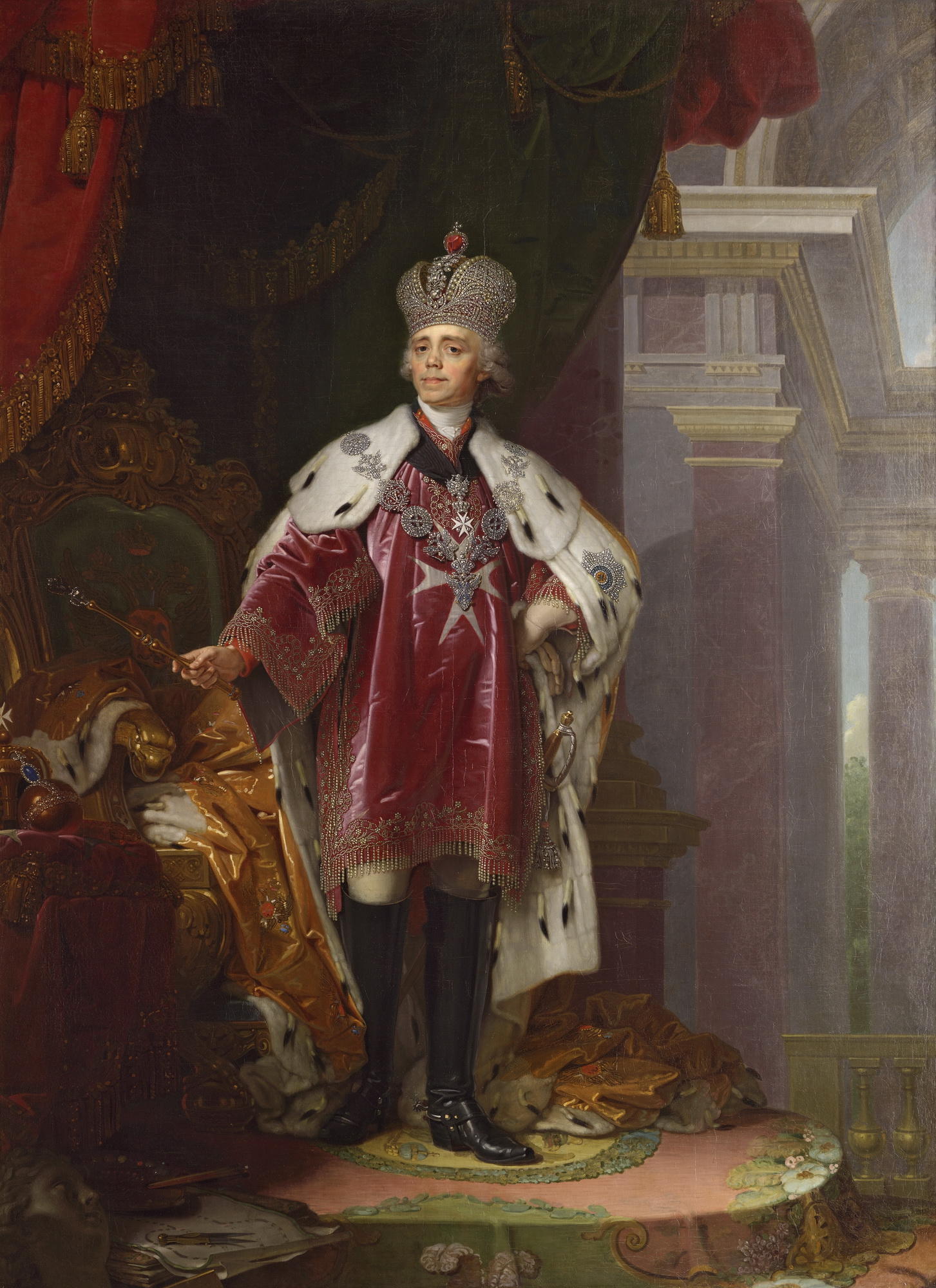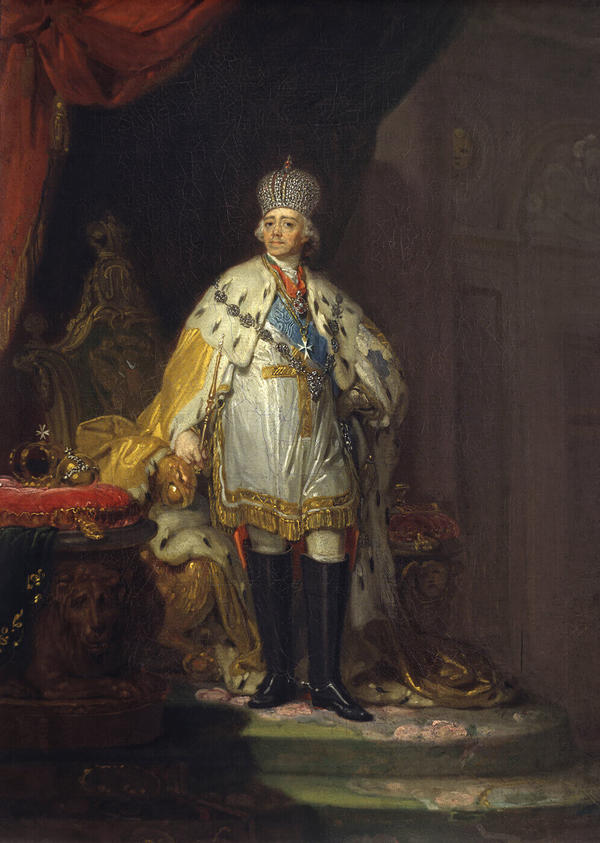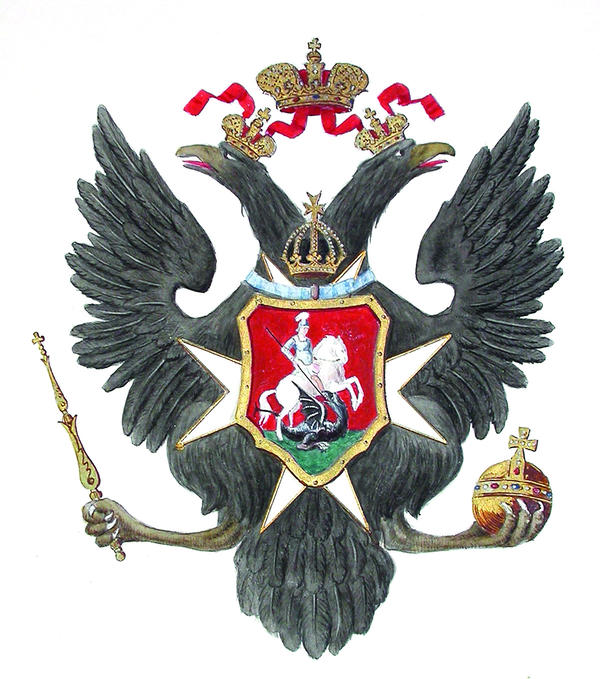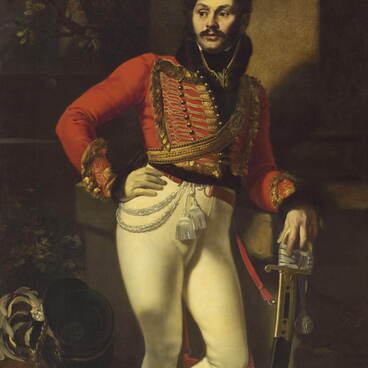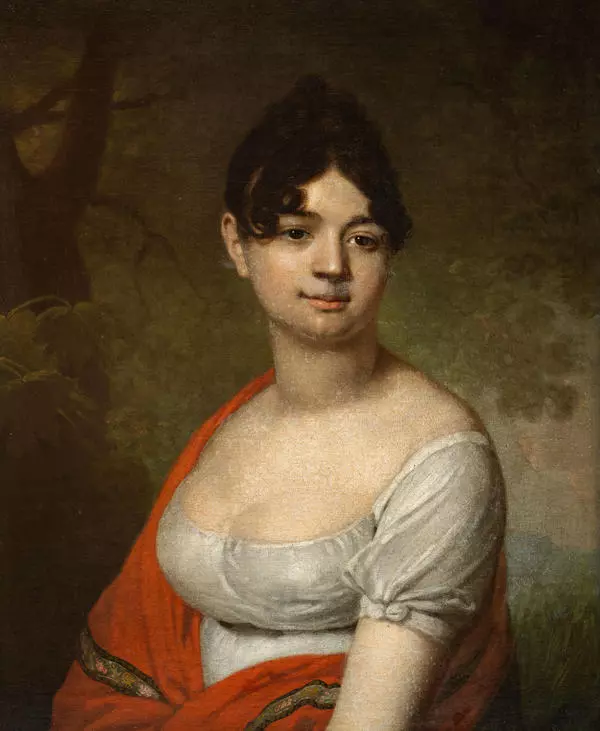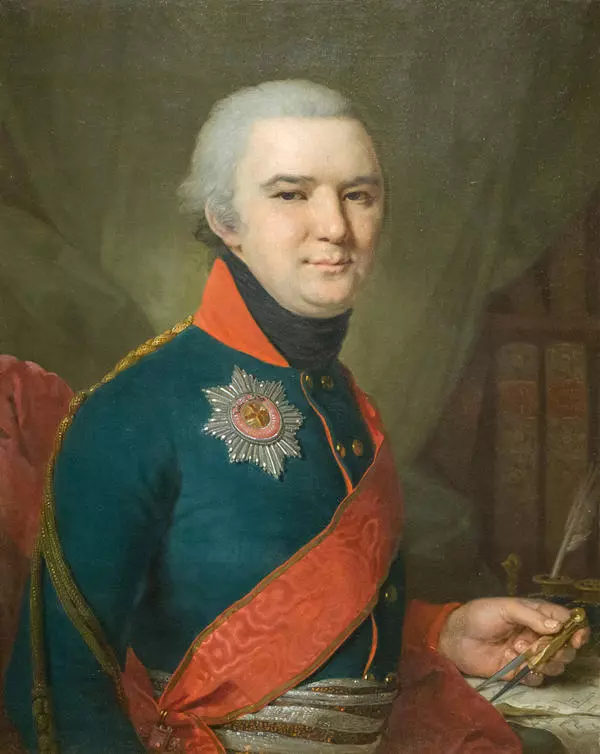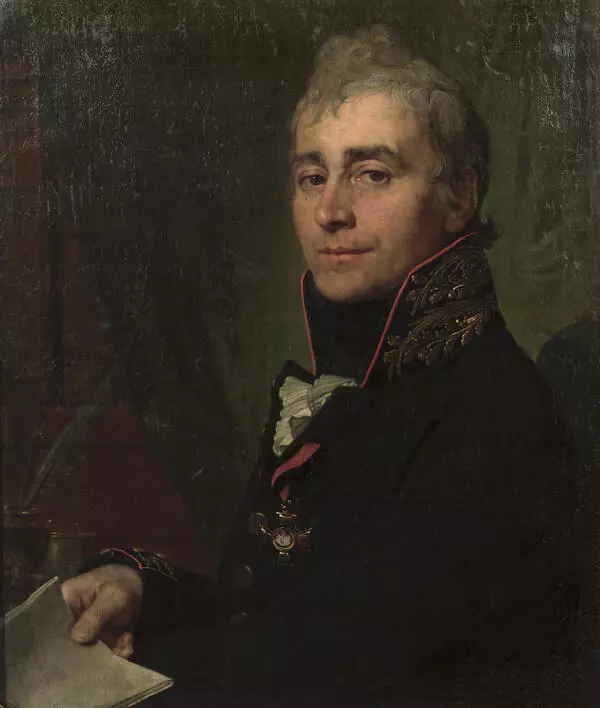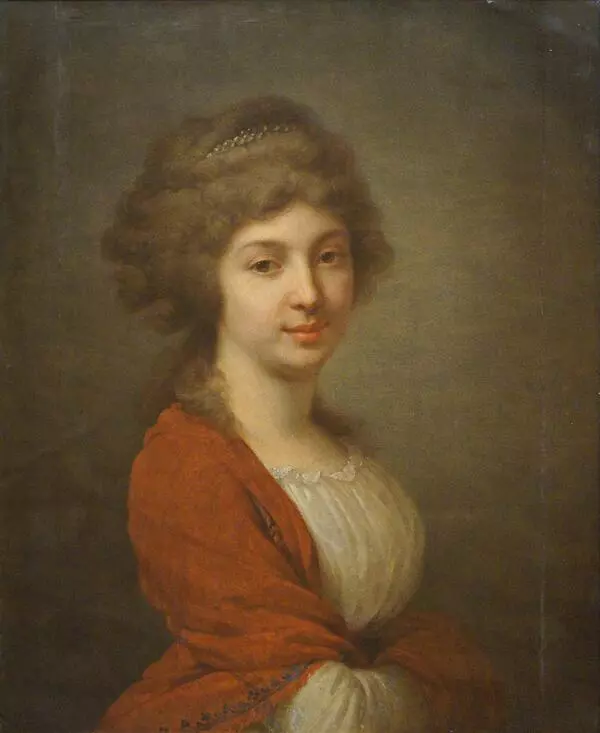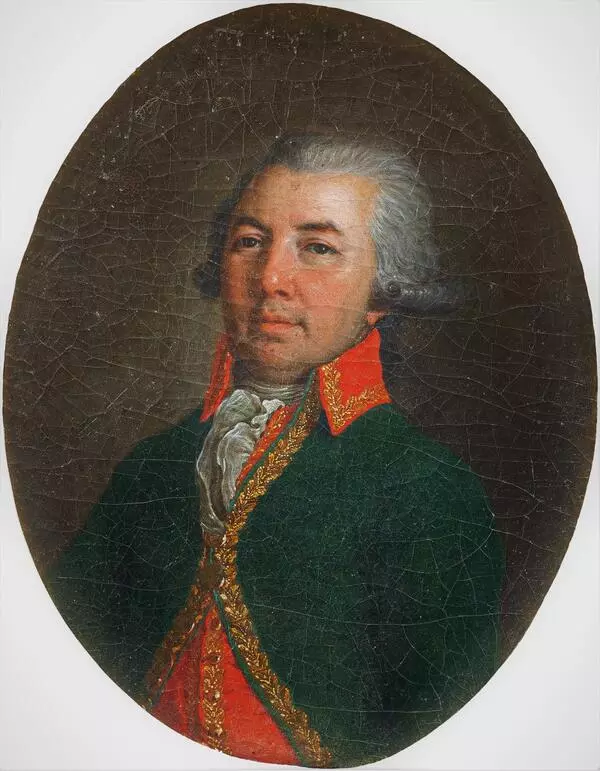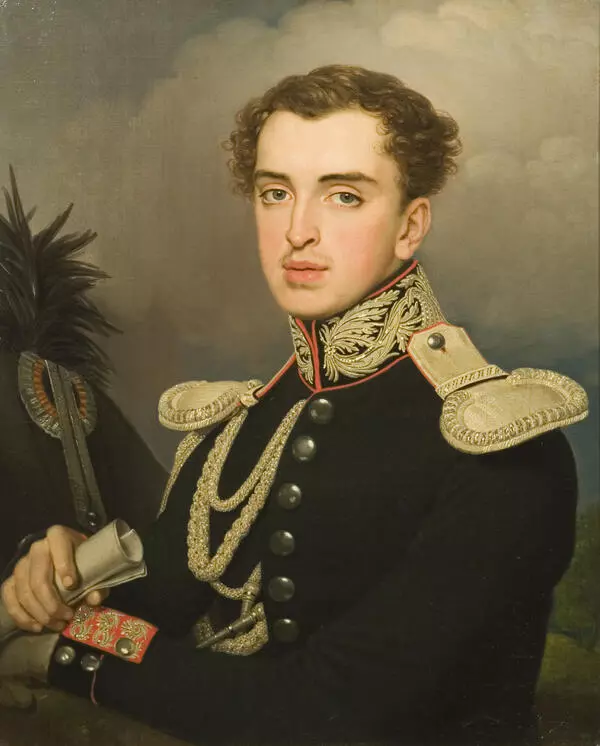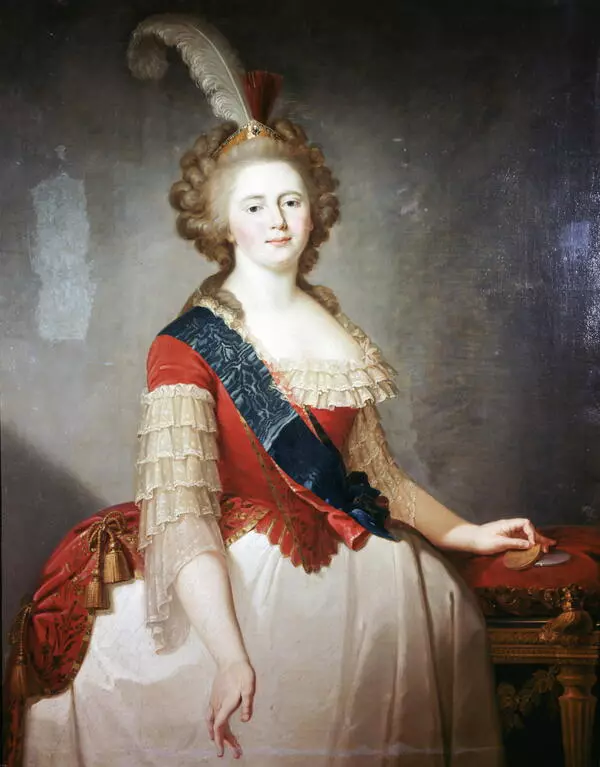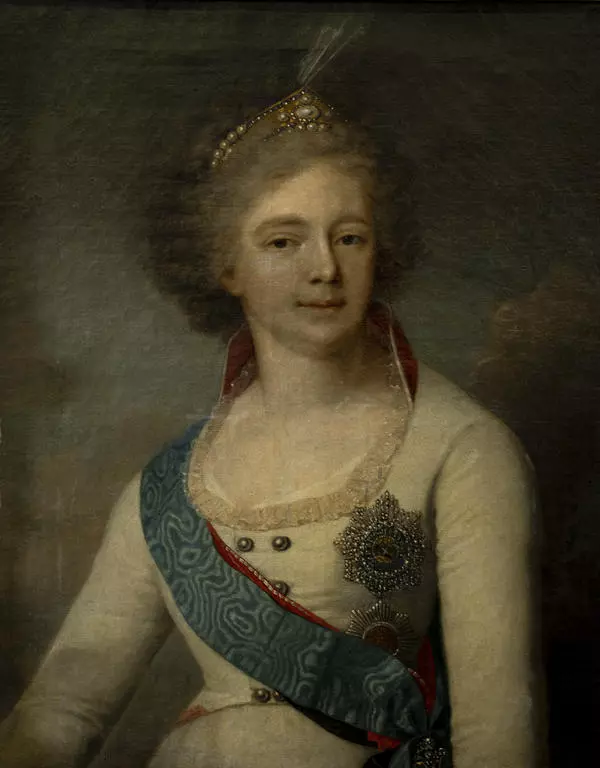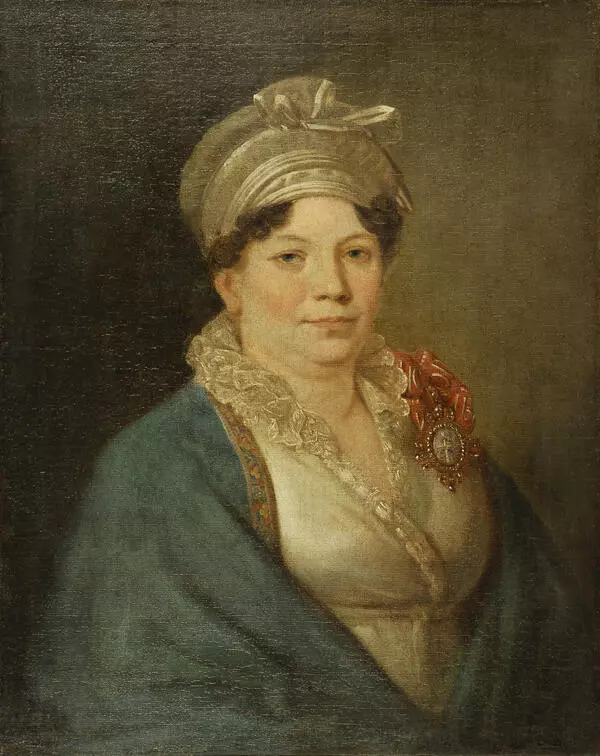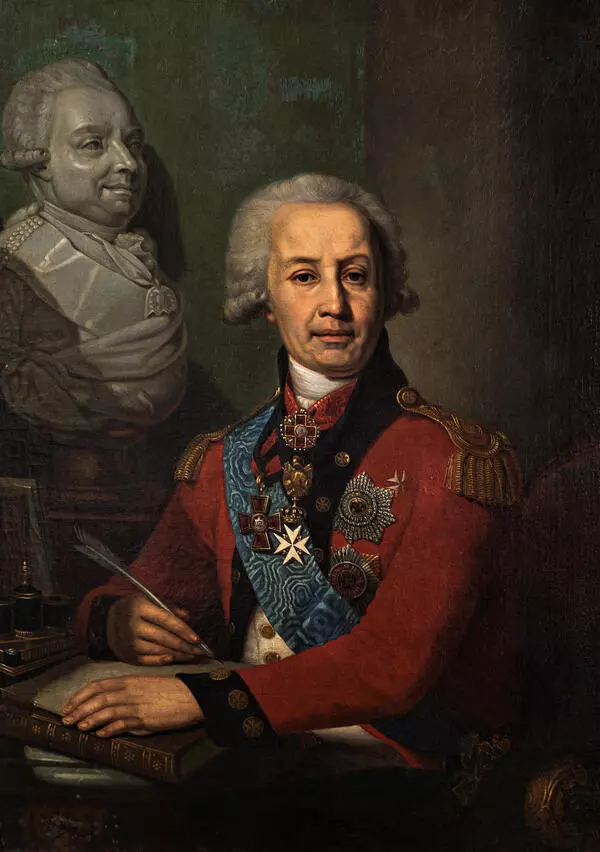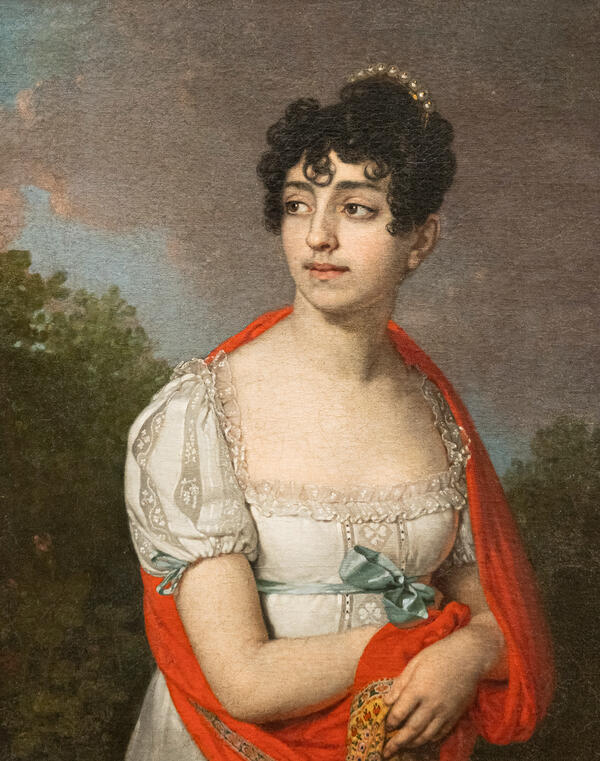In 1798, Napoleon’s fleet captured Malta and the Knights of the Order of Malta had to capitulate. At the request of St. Petersburg Cavaliers of the Order, Russian Emperor Paul I agreed to become protector and patron of the knights’ spiritual organisation and St. Petersburg became its capital. Later the monarch assumed the Crown of the Grand Master of the Order.
Portrait of Paul I
Время создания
1800
Размер
266x202 cm
Техника
Oil on canvas
Коллекция
26
Открыть в приложении#1
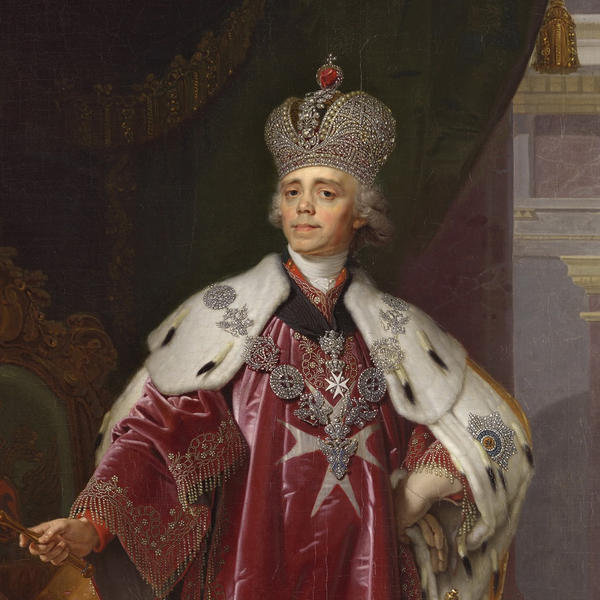
Vladimir Borovikovsky
Portrait of Paul I
#2
#3
In connection with this appointment, artist Vladimir Borovikovsky was commissioned to renew Paul’s coronation portrait and add new regalia and attributes. In the 18th century, royal personae would seldom pose to artists — the custom was to paint from the existing paintings. Borovikovsky painted the monarch’s face from Stepan Schukin’s work.
Stepan Schukin (1754–1828). Portrait of Paul I. Oil on canvas. 1797. The State Tretyakov Gallery
#4
In the portrait by Borovikovsky, Paul I is in full formal dress. He is wearing the attributes of a Russian monarch: the Grand Imperial Crown, the Ermine Mantle, the Order of St. Andrew, the First-Called Apostle. He holds a sceptre in his hand and there is an orb on the throne next to him.
#5
The artist depicted some of the Maltese regalia as well — a dalmatic of the Grand Master (a richly decorated red mantle) and the Order of St.John of Jerusalem established by Paul. The artist is at his best rendering the texture of different materials — flowing brocade, glittering gold, precious metals and pearls. He painted minute details of the golden embroidery and the soft texture of fur and velvet.
#6
Borovikovsky created several images of Paul I. While working at the portrait in coronation vestment he made a small study in which the sovereign is wearing a white dalmatic, and next to the Russian orb there sits the Maltese crown.
Vladimir Borovikovsky. Portrait of Paul I in a White Dalmatic. Oil on canvas. 1799–1800. The State Tretyakov Gallery
#7
The Portrait of Paul I by Borovikovsky is one of the last lifetime images of the Emperor. In 1801, a coup d’etat happened — the monarch who had reigned for only five years was assassinated by a group of conspirators in his residence, a newly built St. Michael’s Castle in St. Petersburg.
#8
The Coat of Arms of the Russian Empire with the Maltese cross approved by Paul I in1799
Under Paul I, the positions of the nobility weakened, militarisation and censorship strengthened. The monarch’s policy was largely a reaction to the reign of his mother, Catherine the Great. Paul put spiritual values above Catherine’s progressive secular reforms. That was also the source of his interest in spiritual knightly orders.
#9
State Russian Museum
читать дальшескрыть
00:00
00:00
1x
Portrait of Paul I
Время создания
1800
Размер
266x202 cm
Техника
Oil on canvas
Коллекция
26
Открыть в приложении
Поделиться
